The Rise of Womens Cricket in India

Women’s cricket in India has grown steadily in recent years, proving its potential as a powerful force in the world of sports. Once overshadowed by the country’s male-dominated cricket landscape, women’s cricket now commands attention with impactful performances and widespread support. From thrilling T20 matches to intense ODI series, the women’s team has shown exceptional skill and determination, captivating audiences both domestically and internationally.
The success of players like Mithali Raj, known for her calm leadership and record-breaking runs, and Jhulan Goswami, celebrated for her fast bowling and incredible wickets, has paved the way for the next generation of talented athletes. Harmanpreet Kaur’s explosive batting has not only inspired young cricketers but has also garnered global acclaim. These athletes have become icons, drawing in new fans and encouraging young girls to pursue cricket professionally.
Platforms like the https://2sky247.in/ have contributed to this growth by making cricket, including women’s matches, more accessible to fans. This increased visibility has led to greater sponsorship opportunities and media coverage, further elevating the profile of women’s cricket in India. The progress so far is not just a sporting milestone, but a reflection of changing attitudes towards women in professional sports, showcasing a society gradually embracing gender equality and recognizing the immense potential women bring to the cricketing world.
Early Challenges and Limited Opportunities
The journey of Indian women’s cricket began many decades ago, but it stayed largely underappreciated for a long time. The landscape began to shift when the Women’s Cricket Association of India was established in 1973, marking a formal recognition of the sport for women in the country. However, those early days were fraught with challenges, as opportunities were limited, and support was sparse. Players faced overwhelming financial constraints, with little to no funding available for women's teams.
The infrastructure was inadequate, often forcing players to practice in substandard conditions. Domestic opportunities were scarce, and organizing matches was a significant hurdle, given the lack of interest from sponsors and audiences. Matches drew little audience, and media attention was almost non-existent, making it difficult for the players and the sport to gain visibility.
Despite these difficulties, the players showed remarkable resilience, balancing societal expectations and personal sacrifices to pursue their cricket dreams. Many had to fight against traditional gender roles and face skepticism about women's participation in sports. Yet, early pioneers like Diana Edulji and Shanta Rangaswamy rose above these challenges and laid a strong foundation for the sport’s growth.
Turning Point with International Recognition
The turning point for Indian women’s cricket came with a series of remarkable performances on the international stage, showcasing their skill and determination. A significant milestone was reached during the 2005 ICC Women’s World Cup when the Indian team made it to the finals. This achievement drew global attention and highlighted the impressive talent of the Indian women cricketers, who had long been overshadowed by their male counterparts. Despite not winning the tournament, their journey to the finals was a testament to their hard work and potential.
However, it was the 2017 ICC Women’s World Cup that truly transformed public perception and elevated the team’s status on the global stage. During a critical semi-final match against the formidable Australian team, Harmanpreet Kaur produced a batting masterclass, smashing 171 off just 115 balls. Her powerful performance, filled with brilliant strokes and resilience, played a pivotal role in helping India secure a spot in the finals. This match not only demonstrated the team's competitive spirit but also cemented their place in the hearts of millions of fans both in India and around the world.
The Role of BCCI in Women’s Cricket Development
The Board of Control for Cricket in India (BCCI) has played a pivotal role in the advancement of women’s cricket in the country. When the BCCI assumed control over women's cricket operations in 2006, it laid the groundwork for much-needed structural and financial support that had been previously absent. This transition facilitated increased funding and more strategic planning, ultimately leading to the establishment of domestic leagues such as the Women’s T20 Challenge.
In a significant development, the BCCI recently announced the launch of the Women's Indian Premier League (WPL), a tournament designed to offer female players a platform comparable to the men’s IPL. The introduction of the WPL is not just a milestone for women’s cricket in India, but it also represents a significant step towards gender parity in sports. These measures by the BCCI have led to substantial improvements in training facilities, attracted more sponsorships, and enhanced the visibility of women’s cricket both domestically and internationally.
Rise of Star Players and Grassroots Talent
The emergence of star players in Indian women's cricket has set remarkable new benchmarks for aspiring young cricketers, inspiring countless individuals across the nation. Talented athletes like Smriti Mandhana, known for her graceful batting and quick footwork, Harmanpreet Kaur, celebrated for her powerful hitting and tactical acumen. And Shafali Verma, admired for her fearless approach and explosive starts, are widely celebrated for their fearless performances and remarkable consistency on the field.
At the grassroots level, numerous cricket academies dedicated to women have emerged across both urban and rural areas, providing essential training and resources to budding cricketers. These academies are often equipped with state-of-the-art facilities, including modern training equipment and experienced coaches who offer specialized guidance. Initiatives led by former players, who bring invaluable experience and mentorship, state boards that ensure structured programs and tournaments, and private sponsors who provide crucial financial backing.
Role of Media and Sponsors in Popularizing the Game
Media coverage and sponsorships have played a crucial role in making women’s cricket a household name in India. Television and digital platforms now bring live coverage of women’s matches to millions of homes, significantly increasing the sport's reach and popularity. Broadcasters frequently highlight key moments and player stories, drawing in viewers who may not have followed the sport before. Sponsorship deals provide players with financial stability, allowing them to focus more on honing their skills and performance.
These deals also boost the game's visibility, as sponsors typically incorporate players into marketing campaigns that reach a broad audience. Celebrity endorsements and partnerships with well-known brands have gradually brought women’s cricket into the mainstream spotlight. Famous personalities promoting the sport have helped shift public perceptions, demonstrating that women’s cricket is both exciting and competitive.
Positive Social Impact Beyond the Pitch
The rise of women’s cricket in India is more than just a sporting achievement, it symbolizes a significant cultural evolution that is reshaping perceptions across the nation. Historically, cricket in India has been a male-dominated sport, with women relegated to the sidelines. However, the increasing visibility of women cricketers is now challenging these traditional gender roles and inspiring countless young girls to dream beyond societal constraints. This movement sends a powerful message of empowerment, encouraging more families to support their daughters in pursuing sports with the same fervor and commitment traditionally reserved for sons.
As women’s cricket gains popularity, schools, and colleges are expanding their programs to include more robust training and competition opportunities for girls. Local communities, too, are starting to take girls' cricket more seriously. This is evident in the growing number of local tournaments and leagues catered specifically for women, fostering a deeper cultural shift towards gender equality in sports.



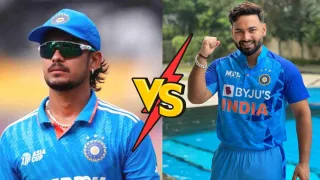

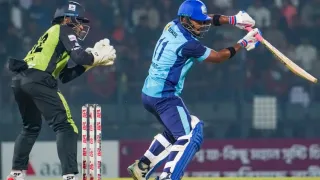
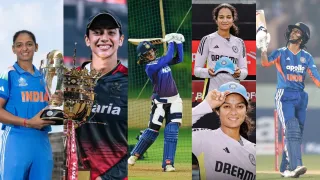
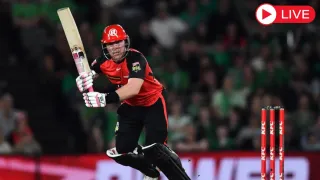
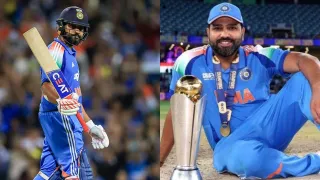

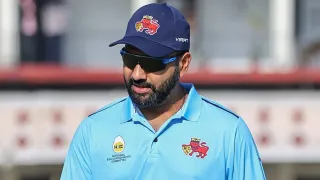

Give Your Feedback